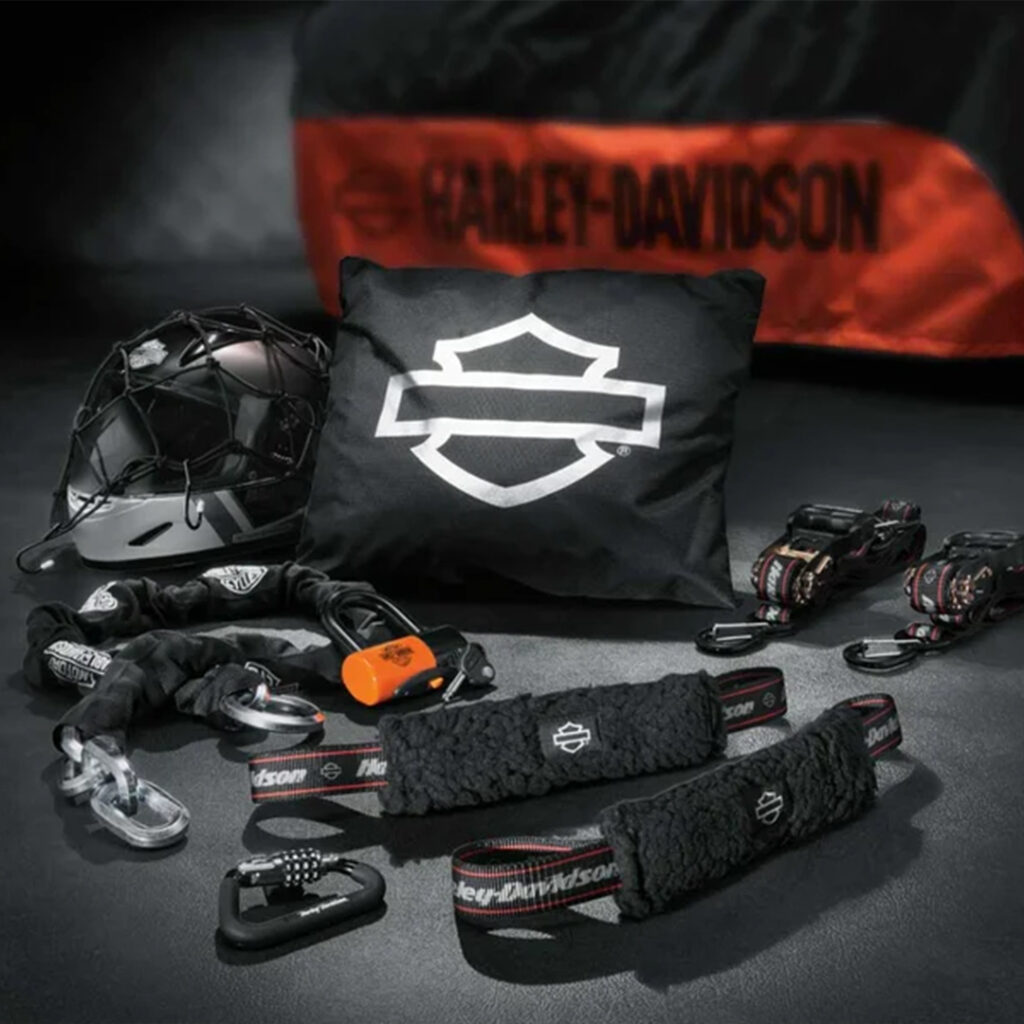Where are Harley Davidson Parts Made?
Where are Harley Davidson Parts Made from the saddle of a Harley-Davidson motorcycle? You get not only a view of the open road but also a glimpse into a manufacturing world where parts of American-made bikes could be from Asia, Europe, or South America.
Harley-Davidson history, the world’s largest manufacturer of heavyweight motorcycles, does not disclose where most of its parts are sourced. Still, industry sources say the company sources them from the U.S., Japan, Italy, Mexico, China, Australia, and other countries.
For years, Milwaukee-based Harley has used Japan’s Showa brand suspension components. Brake and clutch parts come from Italy, wheels from Australia, and electronics from all over Asia.
Increasingly, this is the world of manufacturing everything from airplanes to appliances. Global companies are looking for the best deals they can find on parts shipped to their factories; in some cases, it can be a way to circumvent import duties that increase your costs.
Sourcing decisions are based on quality, component availability, supplier reliability, and cost. Harley said in a statement to the Milwaukee Journal Sentinel. Hand tools and power tools are incredibly vital to many job sectors and industries as the following list.
- Top 3 best bolt cutters for master lock
- 10 Best Tools needed to work on Harley Davidson
- 5 Best Tool to break car window glass
- Top 10 Largest snap on the tool set
- Best Tool to remove shower head replacement
- Where is the jeep tool kit located
- Narrow width truck tool boxes
- Where is the jeep wrangler tool kit located
- Complete mechanics tool set with box

Where do Harley parts come from?
Harleys sold in the US are assembled in one of four plants located in Wisconsin, Missouri, and Pennsylvania. But the brakes and clutch are imported from Italy, the engine pistons are made in Austria. The bicycle suspension comes from Japan, and other electronic components originate from Mexico and China.
Where are Harley Davidson Parts Made?
The company assembles most of its bicycle lines in Kansas City, Missouri, and York, Pennsylvania. Its V-Twin engines are made in Milwaukee. There is a small factory in Tomahawk that makes fiberglass and plastic components for some of the company’s more expensive components, touring bikes.
Harley-Davidson is moving European-bound motorcycle production to its international factories. The company is inaugural a plant in Thailand this year and has assembly plants in India and Brazil.
Harley’s announcement was in response to the European Union imposing a 31 percent tariff on US-made motorcycles.
The EU began applying tariffs on American imports, including Harleys, bourbon, peanut butter, and orange juice. Tariffs on US products worth $ 3.4 billion are in retaliation for the tariffs President Donald Trump has imposed on European steel and aluminum.
Harley’s move triggered a series of angry tweets from Trump, who chided the company, revered by many for its American heritage, for shifting production overseas.
Industry sources say the percentage of overseas parts on a Harley varies by bike model and year, but the company, like most manufacturers, buys the best deals globally.
How much of an Indian motorcycle is American made?
Motorcycle manufacturers squeeze dimes and nickels, per piece, to save dollars on the finished bike, said Robert Pandya, an industry veteran who has worked for Polaris Industries, the maker of Indian Motorcycles.
Most consumers care more about value and price than where something comes from, according to Pandya. These days it’s a matter of pride to have a Lexus, Honda Acura, or BMW in your garage parked next to your Harley, Pandya said. We are a global trading society, whether we admit it or not, he added.
But owning an all-American Harley is important to some riders, like Monte Whiteaker, who runs the Rock River chapter of the Oconomowoc-based Harley Owners Group. He has owned Harley-Davidsons for 18 years.

Whiteaker says it is vitally important to him that the bikes are made in America. I want a quality bike, but I would also like to see all the components made in America.
He believes that many Harley riders feel the same way. It comes up in conversation. The ability to make what you’re riding an American bike means a lot to someone to be proud that this bike was made in the USA.
Industries go global | Where are Harley Davidson Parts Made
It is not uncommon for American-brand cars and trucks to contain parts from around the world or be manufactured elsewhere. In fact, not a single 2018 model vehicle sold in the US gets 100 percent of its shares from the US or Canada, according to the National Highway Traffic Safety Administration.
Over the past few decades, the automotive industry has gone global, typically locating suppliers close to where vehicles are manufactured to minimize costs.
The reality is that there are so many parts around the world that make up a vehicle, said Jeff Schuster, an analyst at LMC Automotive who tracks vehicle manufacturing.
Sometimes, foreign automakers make vehicles with more American-made components than domestic automakers. For example, Japanese automaker Honda ranked in four of the top 10 spots on Cars.com’s 2018 list of the 10 most-made vehicles in America.
That index is based on which cars are made in the United States, have the most American made motorcycle parts, and support the most American factory jobs, Cars.com said.
The Honda Odyssey minivan and Honda Ridgeline pickup truck get the highest proportion of their parts from the US or Canada at 75 percent each, according to the NHTSA. Only Tesla makes all of its vehicles here,
and that will change when the company opens a plant in China. Dozens of vehicles don’t source any parts from the US, which means they are fully imported.
Where are Harley Davidson Parts Made?
Some motorcyclists complain that Harley uses foreign-sourced parts. The first thing they do after buying a bike is to adorn it with accessories made in China, said John Miller, a Milwaukee-area Harley rider who owns Harley-Davidson, a motorcycle windshield company.
There are a lot of things on bikes that are based overseas, Miller said. When did the Harley-Davidson factory start using foreign parts? Some motorcyclists may not like foreign parts, but they understand Harley’s situation in trying to keep its costs down, said Tony Sanfelipo, a Harley motorcyclist from Milwaukee.
I think the biggest problem for Harley is attracting a younger audience in America, he said. Loren Wahl, treasurer of the Wisconsin Dual Sport Riders club, owns foreign-made off-road motorcycles and has little loyalty to the country that built them.
Am I, as a motorcycle owner, emotionally concerned about the origin or source of the parts or the point of assembly? The answer is no, he said. I’m concerned about function, cost, and reliability, in that order.
Shorthand for American Manufacturing | Where are Harley Davidson Parts Made
About 43 percent of new Harleys are sold outside of the US. The company aims to increase to more than 50 percent through fast-growing foreign markets where the brand is associated with American culture and self-expressionism.
The emphasis on international sales, along with tariffs, trade disputes, and Trump, puts the spotlight on where Harley locates factories and buys parts. Still, the company is not alone in that arena.
All motorcycle, motorsport, and auto manufacturers with global aspirations have global operations, said industry analyst Craig Kennison of Robert W. Baird & Co. in Milwaukee.
The Harley-Davidson story is powerful because the Harley-Davidson brand is an abbreviation for American manufacturing, not because Harley-Davidson is making unusual decisions, Kennison said.
The image of the US-built company prompted Throttle X, a Grand Rapids, Michigan company that sells aftermarket batteries, to ask where Harley sources its components on its blog.
Throttle X first wrote about the topic four years ago, and that post continues to get reader feedback today.
Comments range from those who say a company building complex machinery must rely on suppliers around the world to insisting that all Harley bolts must be American-made. It’s been an issue, said Jeff Hillis, manager of Throttle X. We couldn’t answer any, but we wanted to start the conversation.
A complex supply chain | Where are Harley Davidson Parts Made
Harley-Davidson has been selling motorcycles abroad practically since the company was founded in a shed in Milwaukee in 1903. The company is no stranger to working with manufacturing partners,
but now that its bikes are being sold around the world, the supply chain has become increasingly complex. When the company introduced its Street model motorcycle four years ago, manufacturing issues arose that delayed delivery of the bikes to dealers.
This is the first time we’ve made products internationally, and with that, most of the supply chain is international, CFO John Olin said in a 2014 conference call with analysts.
And not only is it a much longer supply chain, but it has many new suppliers. We are going through a learning curve, Olin said. Anxiety over complex supply chains and the aftermath of trade wars extends well beyond motorcycles.
Under the latest tariffs, it is expected to wipe out a plethora of consumer goods that have a global footprint like cars, appliances, and agricultural products.
The Trump administration has imposed and threatened several rounds of tariffs and sanctions so far this year, targeting a wide range of trading partners, many of them important American economic allies over the past 70 years: the European Union, China, and India, as well as both NAFTA partners Mexico and Canada.
What Economists think
Economists say Americans will pay the price for trade sanctions in the form of higher-priced goods, loss of competitiveness for US-made products, disrupted global supply chains, and ultimately lost jobs.
More collateral damage comes in the form of global economic uncertainty as plant managers can no longer predict their steel and aluminum costs. If the trade war begins to cast doubt in the minds of business leaders and investors about the management of the economy,
and those folks refrain from expanding or investing, that change in sentiment could trigger a recession, said Philip Levy, a senior researcher who studies the global economy at the Chicago Council on Global Affairs.




